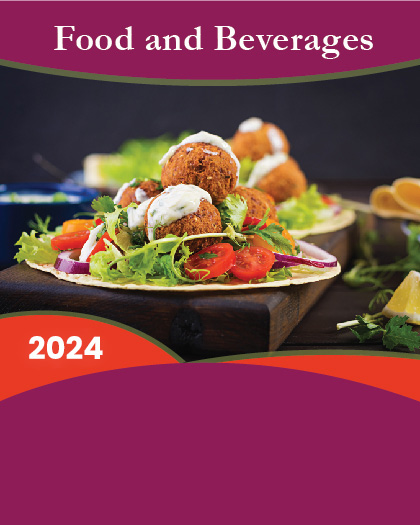1. Preface
1.1. Objectives of the Study
1.2. Market Segmentation & Coverage
1.3. Years Considered for the Study
1.4. Currency & Pricing
1.5. Language
1.6. Stakeholders
2. Research & Forecasting
2.1. Research Methodology
2.1.1. Research Process
2.1.2. Research Framework
2.1.3. Research Reliability & Validity
2.1.4. Research Assumptions
2.2. Forecasting Methodology
2.3. Research Outcome
3. Executive Summary
3.1. Shelf-life Testing Market: Outlook
3.2. Shelf-life Testing Market: Current State & Forecast
4. Premium Insight
4.1. Market Connectivity
4.2. Market Data Feed
4.2.1. Market Sizing & Forecasting, by Parameter
4.2.2. Market Sizing & Forecasting, by Food Tested
4.2.3. Market Sizing & Forecasting, by Method
4.2.4. Market Sizing & Forecasting, by Technology
4.2.5. Market Sizing & Forecasting, by Geography
5. Market Dynamics
5.1. Drivers
5.2. Restraints
5.3. Opportunities
5.4. Challenges
6. Industry Insight
6.1. Porter's Five Forces Analysis
6.1.1. Threat of New Entrants
6.1.2. Threat of Substitutes
6.1.3. Bargaining Power of Customers
6.1.4. Bargaining Power of Suppliers
6.1.5. Industry Rivalry
6.2. Client Customizations
7. Global Shelf-life Testing Market, by Parameter
7.1. Microbial Contamination
7.2. Nutrient Stability
7.3. Organoleptic Properties
8. Global Shelf-life Testing Market, by Food Tested
8.1. Bakery & Confectionery Products
8.2. Dairy, Dairy Products and Desserts
8.3. Meat & Meat Products
8.4. Packaged Food
8.5. Processed Fruits & Vegetables
9. Global Shelf-life Testing Market, by Method
9.1. Accelerated Shelf-life Testing
9.2. Real-time Shelf Life Testing
10. Global Shelf-life Testing Market, by Technology
10.1. Equipment & Kit-based
10.2. Manual Tests
11. Global Shelf-life Testing Market, by Geography
11.1. Americas
11.1.1. Argentina
11.1.2. Brazil
11.1.3. Canada
11.1.4. Mexico
11.1.5. United States
11.2. Asia-Pacific
11.2.1. Australia
11.2.2. China
11.2.3. India
11.2.4. Japan
11.3. Europe, Middle East & Africa
11.3.1. France
11.3.2. Germany
11.3.3. Italy
11.3.4. Spain
11.3.5. United Kingdom
12. Competitive Landscape
12.1. 360iResearch FPNV Positioning Matrix
12.1.1. 360iResearch Quadrants
12.1.1.1. Forefront
12.1.1.2. Pathfinders
12.1.1.3. Niche
12.1.1.4. Vital
12.1.2. Business Strategy
12.1.2.1. Business Growth
12.1.2.2. Industry Coverage
12.1.2.3. Financial Viability
12.1.2.4. Channel Support
12.1.3. Product Satisfaction
12.1.3.1. Value for Money
12.1.3.2. Ease of Use
12.1.3.3. Product Features
12.1.3.4. Customer Support
12.2. Market Vendor Ranking Analysis
12.3. Competitive News Feed Analysis
13. Company Usability Profiles
13.1. AsureQuality Limited
13.1.1. Overview
13.1.2. Strategy
13.1.3. SWOT
13.2. Merieux Nutrisciences US
13.2.1. Overview
13.2.2. Strategy
13.2.3. SWOT
13.3. R J Hill Laboratories Limited
13.3.1. Overview
13.3.2. Strategy
13.3.3. SWOT
13.4. Scientific Certification Systems, Inc.
13.4.1. Overview
13.4.2. Strategy
13.4.3. SWOT
13.5. Symbio Laboratories
13.5.1. Overview
13.5.2. Strategy
13.5.3. SWOT
13.6. ALS Limited
13.7. Bureau Veritas S. A.
13.8. TuV NORD GROUP
13.9. TuV SuD
14. Appendix
14.1. Discussion Guide
14.2. 360iResearch Competitive Strategic Window
14.2.1. Leverage Zone
14.2.2. Vantage Zone
14.2.3. Speculative Zone
14.2.4. Bottleneck Zone
14.3. Top Reports
14.3.1. Global Crane Rental Market
14.3.2. Global Computer Vision Market
14.3.3. Global Payment Gateway Market
14.3.4. Global B2B Travel Market
14.3.5. Global Varicose Vein Treatment Devices Market
14.4. Author Details























